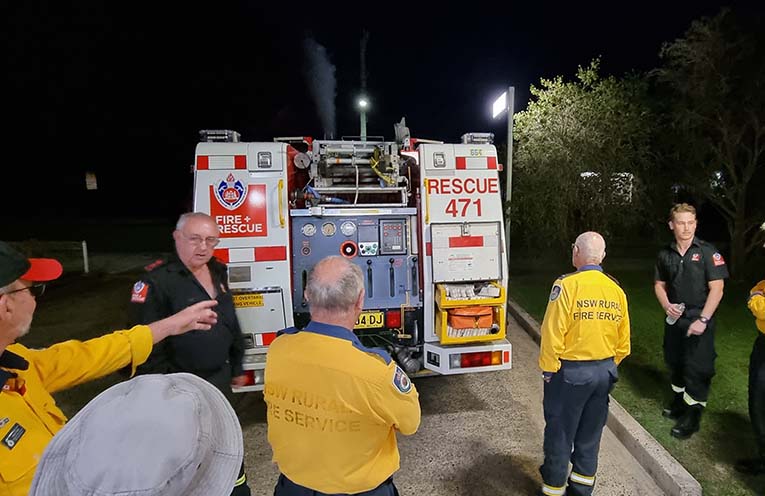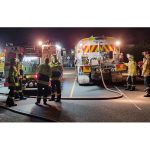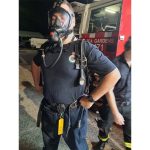
FIREFIGHTERS from the two state services congregated for a joint training session in Tea Gardens on Tuesday, 16 April, in what was hopefully the first of several collaborative sessions moving forward.
Passers-by may have noticed the lights and action around the small fleet of emergency services trucks, and the volunteers of the Pindimar-Tea Gardens Rural Fire Service (RFS) along with the Tea Gardens Fire & Rescue 471 firefighters.
 Advertise with News of The Area today.
Advertise with News of The Area today.It’s worth it for your business.
Message us.
Phone us – (02) 4981 8882.
Email us – media@newsofthearea.com.au
Fire & Rescue Captain Jim Wisemantel led the tour of the operational areas of the trucks, highlighting several differences between the equipment setups of both services.
“The idea is to give both crews a basic familiarisation for relay pumping, and booster training in the future,” Jim said.
“We are such a small town and fairly isolated, so we must back each other up, as no big fleets of trucks will be coming down the hill like in the cities.”
While the RFS and Fire & Rescue do have clear ‘zone’ demarcations, given the relative isolation from reinforcement crews, one service will, and has, inevitably come to rely upon backup from the other.
The local RFS has been reinforced by brigades from across the MidCoast, Lower Hunter and Port Stephens districts, while Fire & Rescue’s nearest official reinforcements would have to come in from Newcastle or Williamtown.
Despite the many differences, key similarities remained, such as the life-saving halo sprinkler system on all trucks.
Practice ensued, hooking up the big RFS Mid Coast District water tanker to the Fire & Rescue truck and hoses, then a simulated ‘gas attack’ with wide spray-shield, by which the twist nozzle turns the hi-pressure spray into a parabolic umbrella that blocks heat and flame, preventing flare-ups, and allowing a safer approach to eliminate gas fires.
“I am pleased that we can work so well together,” RFS Captain David Bright told NOTA.
“It is a good thing for the town that the Brigades can support each other.
“Following the success of this joint training, we are planning to do more to enhance our joint capabilities.
“Next is checking out the hydrant booster systems, and further exploring the capabilities of each other’s vehicles.”
By Thomas O’KEEFE


